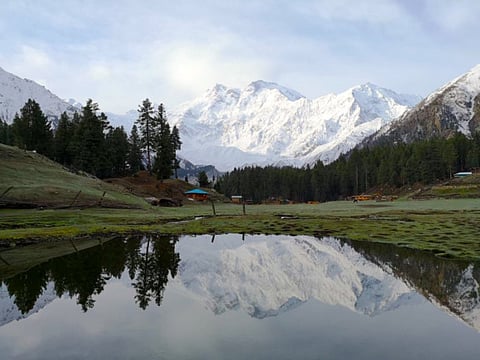Why Pakistan’s tourist sites are facing an onslaught
Government needs to intervene and make sure that country’s natural beauty is not destroyed

Pakistan is blessed with breathtaking scenery — deep green valleys, lush plains and snowcapped peaks, some of the highest in the world. The extraordinary beauty of the landscape often becomes the scene of exuberant domestic tourism in both cold and hot seasons as the public heads towards the north to either experience freezing temperatures or escape sizzling heats of the plains and the plateaus. Not all of this tourism is documented and therefore what happens in these remote areas remains a distant concern. Not anymore.
More and more members of the local population are waking up to the downside of unregulated marketing and promotional campaigns that are run in these areas. Predictably, they are not singing praises for the ingress. Recently a local community in the northern end of the country raised hue and cry over terrible graffiti being inscribed on the side roads by a paint company that had hired young lads to tell the visitors about the magical things their colours could do to their lives.
That the magic was sprayed in gaudy mixture of chemical laden paints all over the boundary walls of the meandering main highways did not impress anyone. Some keen-eyed tourists first reported this to the media and then this was followed up by a local who moved a formal application to register cases against those “murdering” natural beauty.
Also Read: When cricket warms Pakistan’s heart
The voice soon echoed in the world of expert explorers who added to its pitch and eventually forced the local administration to pull down the eye sores. One success story does mean a thing in the larger context of the practical vandalization of the nature’s gifts. Anywhere you go, you are greeted by imposing billboard blocking your view of the resplendent surroundings.
Visual pollution
Telecom companies who are in a mad race to somehow capture the remaining parts of a saturated market cause the most offence by displaying their packages on every second prominent boulder. The rest of the space is taken over by big corporate sector — either promoting soft drinks or munching items that are cheaply available but are announced by using and exploiting extremely precious environment.
Local businesses are not far behind and they use a veritable license of being natives to go for the kill. The towers, the boards, the hoardings, the graffiti and the signs together form a dreadful visual pollutant that stretches all across major tourist spots in Pakistan. This goes hand in hand with encroachments of lands alongside rivers and streams or strategic spots where the visitors often have stopovers and freshen themselves up to continue their journey.
This government has pledged to develop tourism and invite larger number of foreigners to come and see and relish the country’s enormous beauty. But much of this effort is centred on creating infrastructure and creating a more pleasant narrative through broachers and high-end events, like skiing contests. Dealing with visual pollution isn’t really an idea that has caught in the higher echelons of power and policy.
Ironically, tourism promotion is exactly the kind of pressure that the locals are complaining against because it creates more space for hanging posters and banners in the name of “marketing”. It is indeed a difficult balancing act to perform: in order to make Pakistan’s tourism live up to its potential and perform the kind of business miracle Pakistan’s economy needs, these regions have to be opened up to support facilities like boarding, lodging, and picnicking.
Full of publicity stunts
That itself is fraught with publicity stunts of the kind that ruin the environment and strain the eyes. The local populations of these areas are also caught on the horns of the same dilemma. They want to make money but the attendant cost — unbridled displays of goods and services all around that destroy their peace of mind and make them feel alienated from the heavenly habitat they are used to living in.
Often such internal frictions create violence. For instance for the last couple of years tourism in Pakistan’s most visited hill station, Murree, in the sub-Himalian region has been declining on account of frequent clashes between the locals and the visitors who are accused of being insensitive and rapacious in their merrymaking.
But as revenues declined, locals have again started a concerted campaign to attract the outsiders and rebuild their image of being hospitable. There seems no easy solution to this see-saw of anger and invitation, of tourism promotion and destruction of the environment.
Perhaps the recent events up north can trigger a serious debate in Islamabad and the related provincial capital on managing both ends of the spectrum. The country can neither be left at the mercy of ruthless profiteering nor be allowed to keep its great tourist places out-of-bounds to outsiders.
— Syed Talat Hussain is a prominent Pakistani journalist and writer. Twitter: @TalatHussain1
Sign up for the Daily Briefing
Get the latest news and updates straight to your inbox






